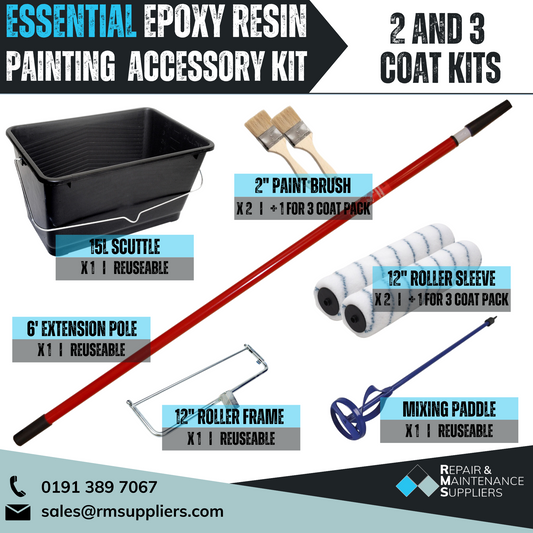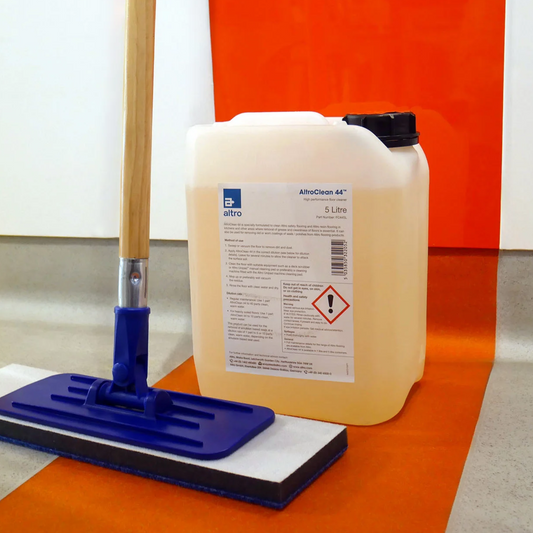Osmo UV-Protection Oil
NATURAL UV-PROTECTION FOR VERTICALLY STRUCTURED WOOD
Clear, satin wood finish based on natural oil for woodin outdoor areas. Microporous surface allows the wood to breathe and reduces swelling and shrinkage. Water-repellent, will not crack, peel or flake. Simply apply without sanding. Easy and seamless application. Finish stays workable while coating. As top coat on already colour treated wood, Osmo
UV-Protection-Oil prolongs the renovation intervals significantly. As a single product application, it blocks the greying process on vertical surfaces with a UV protection factor 12 in comparison to untreated wood when two coats are applied.
-
Clear UV Protection Oil 410 is safe for humans, plants and animals when dry
-
Clear UV Protection Oil 420 Extra is furnished with active ingredients to protect the coating against mould, algae and fungal attack
- Highly water and dirt resistant
- Contains active ingredients to protect the coating against mould, algae and fungal attack
- Clear and transparent colours available
- Microporous, penetrating finish which does not crack, peel or flake
- No sanding necessary when topping up coating
- Delays natural greying by 12 times in comparison to untreated wood
- Dry Time: 12 Hours
- 2 Coats
- Clear
Instructions
Surface Preparation
-
Wood surface must be clean, dry and frost-free (moisture content max. 20%). Ideally, surfaces are sanded no finer than a P120 grit grade of sand paper. Sanding to finer grades will reduce required absorbency.
-
Do not thin. Stir well using a flat stirring stick or spatula before use. If possible, and if the wood is an absorbent species, please apply the first coat to all sides before installation.
-
Fresh wood containing natural wood ingredients /extractives (eg: Cedar, Larch, Teak, Mahogany or Iroko) are often less absorbent and need to weather off first before applying the product. Please refer to website ‘Suitability’ section for more details. Weathering helps ingredient rich wood become more absorbent and the wood finish adheres optimally. Weathering is also required if ingredient rich wood has been freshly sanded or renovated.
-
A coloured base coat is recommended, e.g. Natural Oil Woodstain. Coloured base coats can improve UV protection.
For renovations, clean old microporous wood finishes thoroughly. De-grey any weathered bare wood with Osmo Wood Reviver Power-Gel before applying an Osmo exterior product.
-
Old paints and lacquers must be completely removed. As a general rule, wear a dust mask during sanding works. To maintain absorbency, avoid sanding surfaces finer than a P120 grit. Weather ingredient rich wood after sanding.
-
The finished surface is influenced by several factors, including the condition of the wood. Therefore, a trial application is always required, especially for unfamiliar surfaces.
-
Soft wood species like Pine or Spruce are more prone to blue stain, rot and insects. If desired, pre-treat these soft woods if possible on all sides with Osmo WR Base Coat.
Method Of Application
-
With Osmo Flat Brush or Osmo Microfibre Roller, apply thinly along the wood grain and spread well.
-
Allow to dry for approx. 12 hours. Cooler temperatures, higher humidity levels or over application will delay drying. Once dry, apply the second coat thinly.
-
When recoating colour treated surfaces, or for renovation works, one coat applied to the clean and dry surface is usually sufficient.
Care
-
Regular Cleaning: Damp cleaning with Osmo Spray-Cleaner or diluted Osmo Decking Cleaner.
-
Occasional Maintenance: If necessary, intensive cleaning and refreshing using Osmo Wood Reviver Power Gel or Osmo Gard Clean.
-
Recoating: Simply re-apply one thin coat onto the clean and dry surface when signs of wear become visible.
Note
-
Oils enhance and intensify the natural tone of wood (permanent wet effect).
Depending on the degree of weathering, apply one coat of Osmo UV-Protection-Oil Extra to the cleaned and intact finish after approx. 3-4 years.
-
Osmo UV-Protection-Oil is best suited to vertical structures whereby there is plenty of water run-off. For areas exposed to strong weathering, such as flat horizontals, weatherboard, post caps or window sills, please expect significantly shorter renovation intervals. Vertical elements mounted onto horizontal wood should have at least a 15 degree angle. Sharp edges must be rounded (radius > 2 mm).
-
If the greying process has already begun, de-grey the surface with Osmo Wood Reviver Power Gel and refinish the dried surface with 2 thin coats of Osmo UV-Protection-Oil Extra.
-
To achieve the UV protection factor 12, it is necessary to apply 2 thin coats of UV-Protection-Oil Extra. With only one coat on untreated wood, the life of the coating is significantly shorter.
-
Using power washers will severely decrease the coverage of the finish and general or multi-purpose cleaners will increase the frequency of maintenance and recoating.
Suitability
Recommended
For all other wood types not mentioned, always trial apply first.
- Oak
- Beech
- Ash
- Alder
- Birch
- Thermowood and Thermally Modified Timber (TMT): prone to grey very fast and therefore application of a tint/colour is recommended within the first two weeks after processing. Always trial apply the tint/colour to reach a harmonious colour tone with Thermowood / TMT.
For the following wood types, WR Base Coat is recommended before use.
- Accoya®
- Kebony®
- Pine
- Spruce
- Douglas Fir
Recommended After Weathering Period
For the following ingredient rich wood species, a weathering period is recommended to improve absorbency. New or freshly sanded ingredient rich wood requires at least 12 weeks exposure to the exterior elements ( unless otherwise stated below) before application.
After the weathering period, it’s generally recommended to de-grey the bare surface with Osmo Wood Reviver Power-Gel , damp rinse, then clean the surface from the extractive content before application, always trial apply!
For all other ingredient-rich hardwood species not mentioned, please contact us for further information.
- Cedar
- Iroko
- Mahogany
- Teak
- Walnut
- Ipe
- Merbau
- Wenge
- Rosewood
- Sycamore
- Pressure-Impregnated Pine
- Sapele: 3-4 weeks exposure
-
Larch: 2-6 weeks exposure. Application of WR Base Coat is recommended before use.
Not Recommended
- Green Oak: moisture content is often above the maximum 20% recommended.
- Idigbo: contains yellow dyes which leaches when the wood becomes wet and stains when in contact within iron.
- Other: woods treated with a varnish, lacquer or other surface coatings must be completely sanded before use.
Top Tips
- Stir well using a flat stirring stick or spatula.
- Sand wood to a final P120 grit sand paper grade. This is the optimal grade for applying Osmo UV Protection-Oils.
- For ingredient-rich wood species (eg: Cedar, Iroko, Teak, Mahogany etc.), please allow 12 weeks weathering prior to application.
- UV-Protection Oils perform optimally on vertically structured timber. For horizontal sections there will be more maintenance.
- On horizontal sections, ensure at least a 15 degree angle to facilitate water run-off. Sharp edges must be rounded (radius > 2 mm).
- Over application , lower temperatures and poor ventilation will increase the drying times.
- UV rays from the sun help to break down protective lignin surrounding the fibres in the wood. Moisture also helps to deplete the lignin and the wood fibres begin to grey naturally. Osmo UV-Protection Oils delay the greying effect 12 x more effectively than bare timber.
- Osmo UV-Protection-Oil 420 Extra is furnished with active biocides to help protect the film coating against the effects from mould, algae and fungal attack. The added biocides do not prevent mould, algae and fungal growth forming on the coating.
- If a clear UV protective finish without biocides is desired ( eg for animal enclosures ), use Osmo UV-Protection-Oil 410.
- Some timbers like Oak and Chestnut are notoriously rich in natural tannins and these ingredients can blacken surfaces when exposed to moisture, sunlight and iron oxides (eg from wire wool). Horizontal sections are more prone to discolouration whereby moisture can accumulate then escape through a breathable coating like Osmo. As the moisture escapes it lowers the risk of warping however, natural tannins can migrate to the surface and cause some black staining. To help reduce this, try to clean the first signs of tannin spots away from the coating with a damp cloth. Over time, the tannins will deplete and the discolouration will be less problematic. Choosing a darker coloured Osmo UV-Protection oil tint, or Osmo Natural Oil Wood stain ( excluding 701 clear matt) can also help to mask discolouration
- Many wood species (eg Larch) contain water-soluble coloured extractives which may leach out naturally when weathered. Bare weathered wood can often be refreshed using Osmo Wood Reviver Power Gel prior to treatment. Always trial apply first.
Where to use
Coverage
Data Sheet
 PRODUCT DATA SHEET | DOWNLOAD
PRODUCT DATA SHEET | DOWNLOAD
 SAFETY DATA SHEET | DOWNLOAD
SAFETY DATA SHEET | DOWNLOAD










